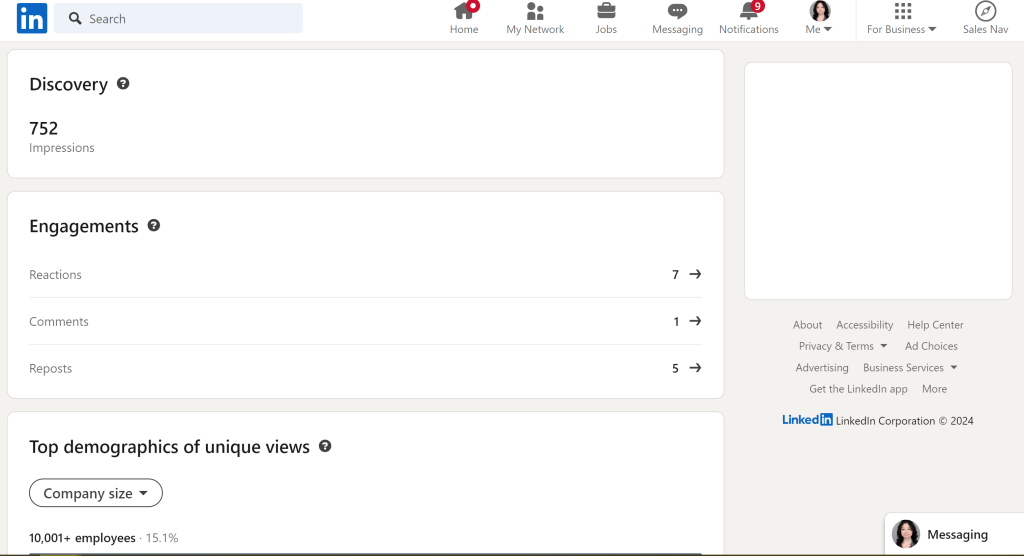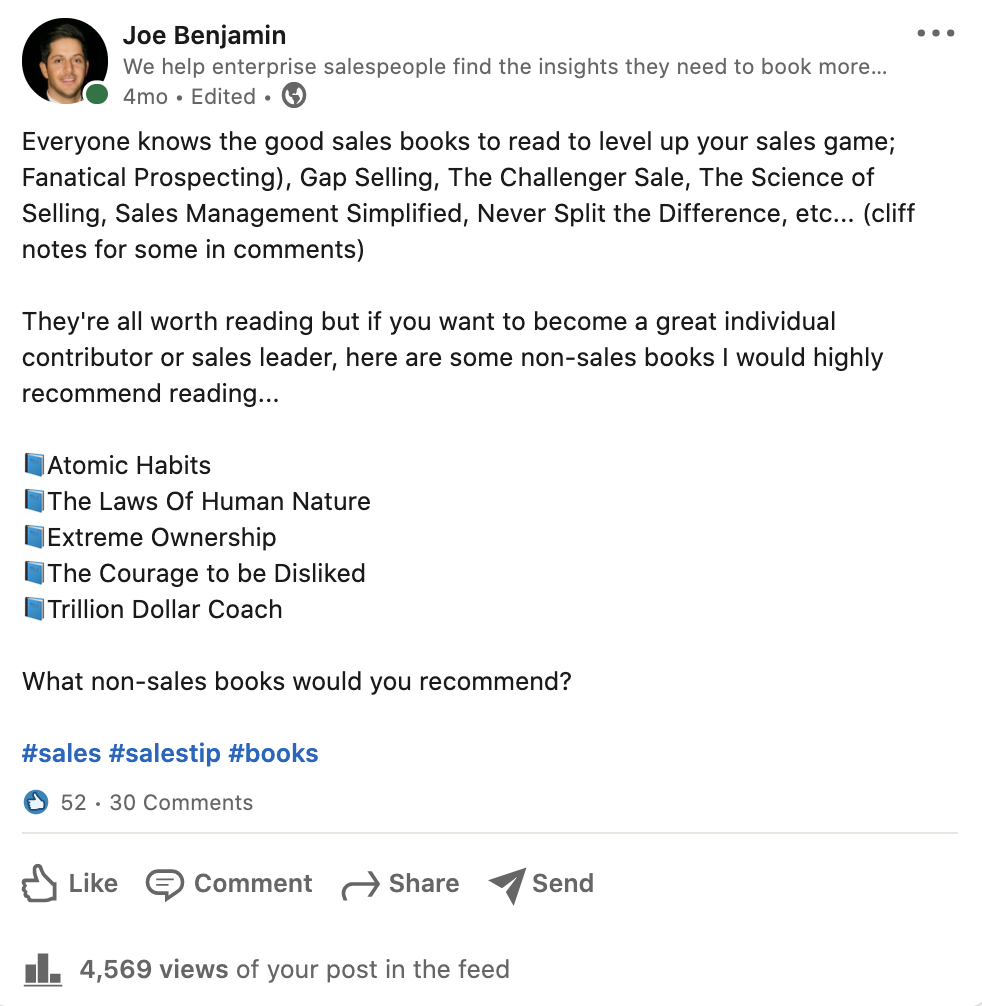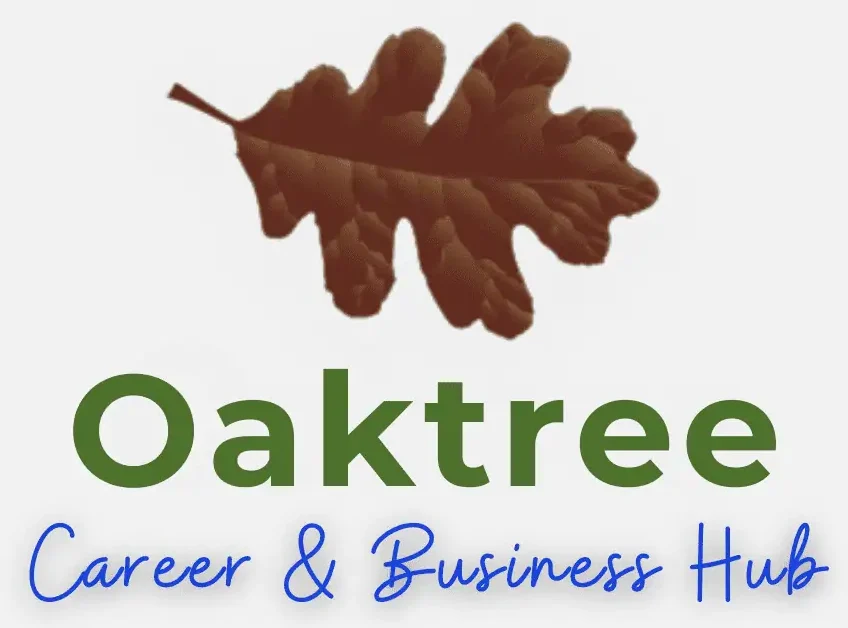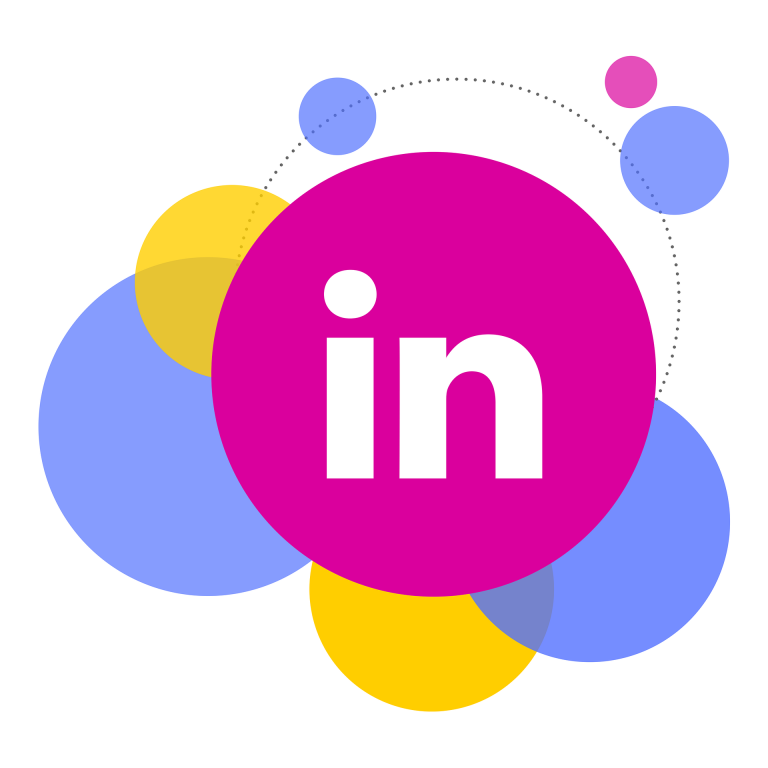How to Create Engaging LinkedIn Posts That Captivate Your Audience
Table of Contents
LinkedIn used to be just for job seekers and networking. But over the last few years, it’s gone beyond that and turned into a place to market your business and generate leads. Creating engaging posts on LinkedIn can boost your business beyond just networking opportunities. It can help you get new customers.
How’s this done? It’s done by understanding your audience. Of course, you should know who your audience is, especially as a business owner. The content you create must be helpful and interesting to your audience.
Understanding Your Audience
To understand your audience, pay attention to specifics such as:
- Demographics
- Characteristics
- Top interests

Identifying Your Target Audience on LinkedIn: Key Strategies
Once you have the basic demographics down, it’s time to go beyond this and dive deeper into your target audience. Delve into the psychographics, values, and pain points of your audience.
Consider the following strategies:
- LinkedIn Analytics: Use these analytics to gather data on your followers’ professions, industries, and locations.
- Engage with your Audience: Use polls and surveys to understand their needs and preferences.
- Analyze Engagement Metrics: Monitor metrics on your previous posts to identify common trends among your audience.
Analyzing Audience Interests and Pain Points: Top Methods
Here are some methods to help you understand your audience better:
- Conduct Keyword Research: Discover topics that resonate with your target audience.
- Monitor Relevant LI Group Discussions: Gain insights into your audience’s challenges and interests of your audience.
- Experiment with Multiple Content Types (articles, videos, infographics): Learn what performs best among your followers. E.g.: If video does better, create more videos.

Don’t make this step too hard. The goal is to get an idea of what your audience wants and serve them with content that helps.
Content Strategy for Engaging LinkedIn Posts
Engaging content doesn’t just grab your audience’s attention, it also sparks real conversations and cements your status as an industry expert.
However, it’s important to have a content strategy in place so you’ll keep posting regularly and consistently on LinkedIn.
Choosing Relevant and Valuable Topics
- Industry trends and insights: Sharing the latest trends and insights in your industry showcases your expertise and keeps your audience informed.
- Professional tips and advice: Providing valuable tips and advice demonstrates your knowledge and offers practical solutions to your audience’s challenges.
- Industry news and updates: Sharing timely news and updates relevant to your field helps position you as a go-to source for information.
- Personal experiences and lessons learned: Sharing personal experiences and lessons learned humanizes your brand and fosters connections with your audience.

Crafting Attention-Grabbing Headlines
- Using power words and emotional triggers: Incorporate words that evoke emotions and grab attention to make your headlines compelling.
- Asking questions or making bold statements: Ask questions or make bold statements to pique curiosity and encourage engagement.
- Incorporating relevant keywords: Include relevant keywords in your headlines to improve visibility and attract the right audience.
Writing Compelling Content
- Storytelling techniques: Engage your audience with storytelling that captivates their interest and makes your content relatable. For more on storytelling and the best way to do it, I recommend Donald Miller’s StoryBrand Framework.
- Use of visuals: Enhance your posts with eye-catching images, videos, or infographics to make your content visually appealing. You can use stock images or create your own using Midjourney or DALL-E.
- Formatting for easy readability: Use headings, bullet points, and short paragraphs to make your content easy to digest and keep readers engaged. Keep paragraphs very short, only a few lines!
Optimizing for Visibility and Engagement
- Best practices for using keywords and topics: Hashtags are being phased out on LI, so ensure you use appropriate keywords and topics to categorize your content and expand its reach to a broader audience.
- Tagging relevant connections and influencers: Tagging relevant connections or influencers can increase visibility and encourage them to engage with your post. Don’t be afraid to let someone know you mentioned them!
- Encouraging comments and shares: Encourage interactions by asking questions, seeking opinions, or prompting readers to share their thoughts on the topic. Questions and comments are great icebreakers to get the conversation rolling.
It’s about delivering value to your audience, sparking conversations, and building relationships within your professional network. So, keep these strategies in mind.

Timing and Frequency
Getting the timing and frequency right can impact your reach and engagement levels on LinkedIn. It’s important to understand when your audience is most active and how often they prefer to see your content.
Identifying the Best Times to Post
Different social marketing platforms will recommend their suggested times to post on LinkedIn.
For Example:
| Buffer | Sprout Social | CoSchedule |
| 9 am to 5 pm | 10 am & Noon | 10am | 10 am and 12 pm |
| Weekdays | Wednesdays | Thursdays | During the week |
Well, that’s confusing! Each place has different times and days when to post on LinkedIn. Although, I recommend using this as a starting point for your posting schedule.
Ideally, you’ll want to find the best time for YOUR content. When is your audience looking at your content? Are they finding your content before going to your competitor?
You need to discover this for yourself while keeping the times from the table above in mind.
To identify the best times to post on LinkedIn for YOUR audience, consider these strategies:
- Use LinkedIn Analytics: Utilize LinkedIn’s native analytics tool to track when your audience is most active. Look for patterns in engagement metrics to pinpoint peak posting times.
- Experiment with Different Times: Test posting at various times throughout the day and week to see when you receive the most interactions. Monitor likes, comments, and shares to determine optimal posting times.
- Consider Time Zones: If your audience is spread across different time zones, schedule your posts to cater to the majority. Social Media Marketing (SMM) Tools like Sprout Social or Buffer can help you schedule posts accordingly.
Determining Ideal Posting Frequency
Establishing the ideal posting frequency on LinkedIn requires a balance between staying visible and avoiding overwhelming your connections. Here are some guidelines to consider:
- Consistency is Key: Maintain a consistent posting schedule to keep your audience engaged. Whether it’s daily, a few times a week, or weekly, find a frequency that works for your brand.
- Quality Over Quantity: Focus on delivering high-quality content rather than bombarding your audience with tons of posts. Be sure each post adds value and resonates with your followers.
- Pay Attention to Audience Feedback: Monitor how your audience responds to your posts. If you notice a drop in engagement with higher frequency, consider dialing back and vice versa.
Testing and Adjusting Based on Performance Metrics
Tracking performance metrics is crucial for refining your posting strategy over time. Here’s why it matters:
- Engagement Data Insights: Analyze metrics such as likes, comments, shares, and click-through rates to gauge the success of your posts. Identify trends and patterns in performance data.
- A/B Testing: Conduct A/B tests with different posting times and frequencies to see what works best for your audience. Use data-driven insights to adjust your strategy for optimal results.
- Iterative Improvement: Continuously iterate on your posting schedule based on performance data. Be agile in making changes to align with audience preferences and maximize engagement.
The worst thing you can do is stop posting consistently and your efforts have to be redone. So, keep testing and adjusting your posting strategy.
Measuring Success and Refining Your Strategy
Here’s how to measure success and refine your strategy to captivate your audience effectively.
Key Metrics to Track
Keeping an eye on how your LinkedIn posts are doing is crucial. Views, likes, comments, and shares—these key metrics let you know how much your audience is resonating with your content.
Tracking these numbers helps you discover what’s working and what’s not, so you can keep your posts hitting the mark.
Analyzing Engagement Data
Analyzing engagement data is essential to identify top-performing content on LinkedIn. By examining likes, shares, and comments on your posts, you can gain insights into what content your audience finds most engaging.
Use this data to help you tailor your content strategy.
Continuously Refining Your Approach
This almost feels never-ending until you discover what works best for your audience. Refinement of your LinkedIn posting strategy is vital for maintaining audience engagement.
Leverage insights gained from audience interactions and post analytics so you can adapt your approach to create more impactful content. Remember to track key metrics, analyzing engagement data, and refining your approach.
Always optimize your LinkedIn posts for maximum impact and audience engagement, and include keywords where appropriate. And, be willing to adjust your strategy to deliver content that truly resonates with your followers.
Creating Engaging LinkedIn Posts to Boost Your Online Marketing
Crafting engaging LinkedIn posts isn’t just about throwing up content; it’s about a strategic blend of value-packed material and audience-focused tactics.
Really get to know your target audience, deliver compelling content, and ensure your posts are seen. What’s more, you’ll be constantly tweaking your approach, so you can truly captivate your LinkedIn community and foster significant engagement.
Always remember, to be helpful and engaging while offering relevant and valuable content to your audience.
Always Keep Learning!
As you embark on your journey to create engaging LinkedIn posts, remember that success is a result of persistent effort and strategic adaptation.
Take the insights and strategies outlined in this post and apply them thoughtfully to your content creation process. Whether you aim to boost brand awareness, drive traffic to your website, or establish thought leadership, LinkedIn offers a powerful platform for achieving your marketing goals.
For help with setting up your LinkedIn profile for your business, check out my free guide: Audit Your LinkedIn Profile for Business.







